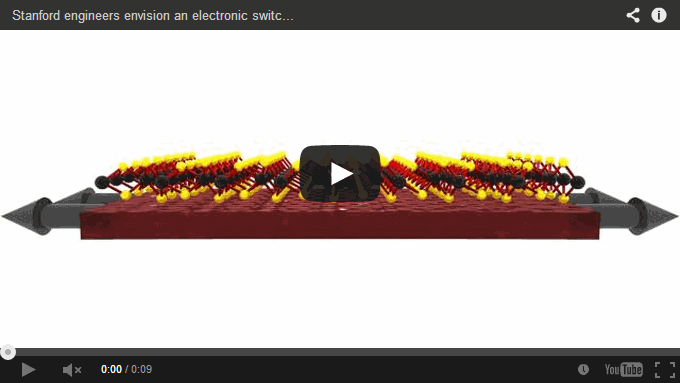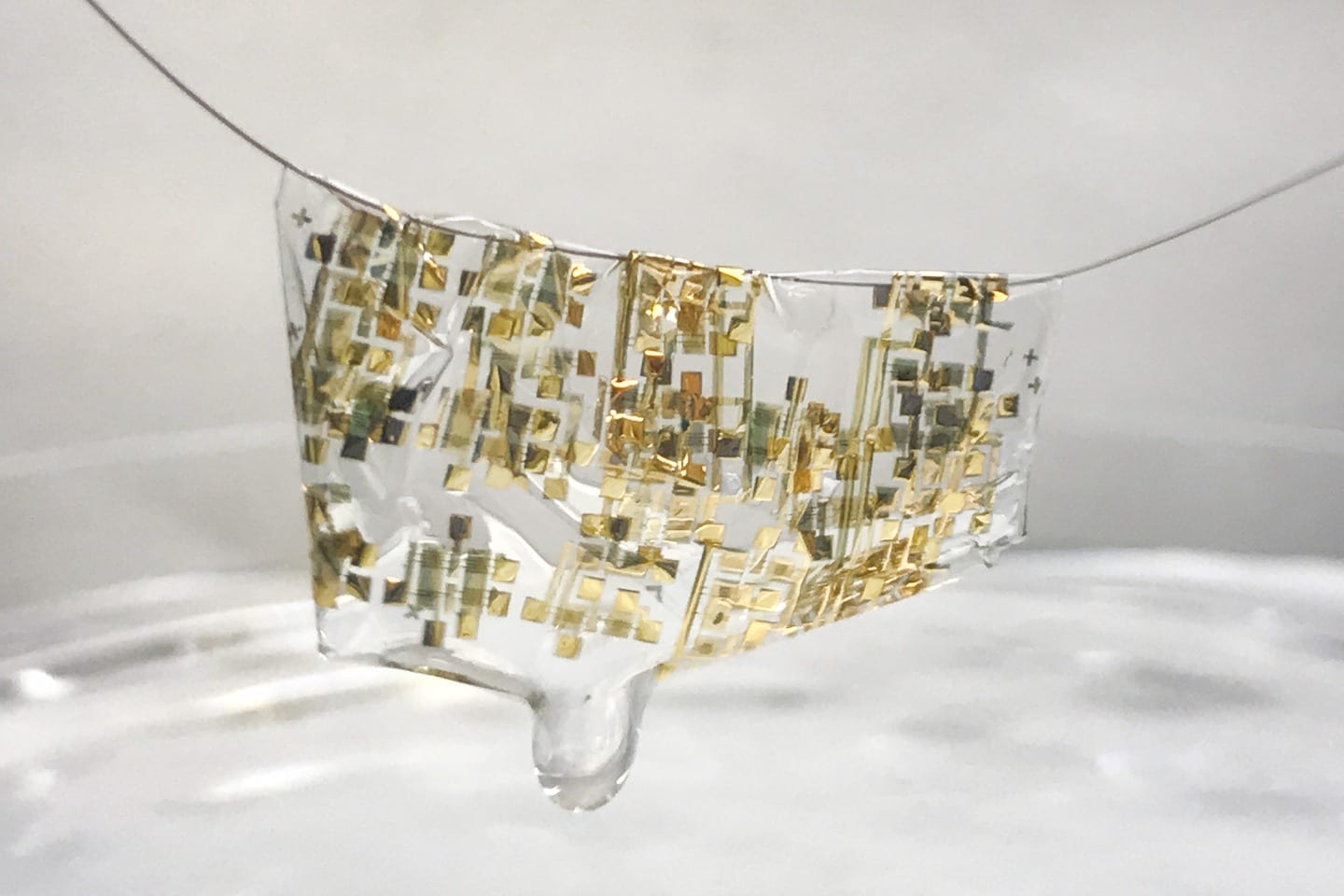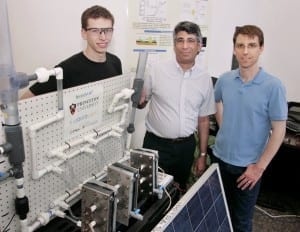Computer simulation shows how to make a crystal that would toggle like a light switch between conductive and non-conductive structures. This could lead to flexible electronic materials and, for instance, enable a cell phone to be woven into a shirt.
Do not fold, spindle or mutilate. Those instructions were once printed on punch cards that fed data to mainframe computers. Today’s smart phones process more data, but they still weren’t built for being shoved into back pockets.
In the quest to build gadgets that can survive such abuse, engineers have been testing electronic systems based on new materials that are both flexible and switchable – that is, capable of toggling between two electrical states: on-off, one-zero, the binary commands that can program all things digital.
Now three Stanford researchers believe that they’ve discovered just such a flexible, switchable material. It is a crystal that can form a paper-like sheet just three atoms thick. Computer simulations show that this crystalline lattice has the remarkable ability to behave like a switch: it can be mechanically pulled and pushed, back and forth, between two different atomic structures – one that conducts electricity well, the other that does not.
“Think of it like flicking a light switch on and off,” says Karel-Alexander Duerloo, a Stanford Engineering graduate student and first author of an article in Nature Communications.
So far this discovery only exists as a simulation. But co-author and team leader Evan Reed, Assistant Professor of Materials Science and Engineering, hopes this work will inspire experimental scientists to fabricate this super-thin crystal and use it to create electronic and other devices that would be as light and flexible as fibers.
Theoretically, such electronic materials have potential to reduce battery-draining power consumption in existing devices such as smart phones. This new, power-efficient material could also make it possible to create “smart” clothing – imagine an ultralight cell phone or a GPS system integrated into your shirt.
Read more . . .
The Latest on: Flexible electronic materials
[google_news title=”” keyword=”Flexible electronic materials” num_posts=”10″ blurb_length=”0″ show_thumb=”left”]
via Google News
The Latest on: Flexible electronic materials
- Scientists claim ‘breakthrough’ separating plastics from e-scrapon April 26, 2024 at 7:18 am
Dutch tech research institute TNO has developed a new method it says could drastically transform the landscape of electronics recycling. With an ...
- EQS-News: XTPL records all-time high revenues, Strategy execution remains on trackon April 26, 2024 at 12:06 am
Issuer: XTPL S.A. / Key word (s): Annual Results XTPL records all-time high revenues, Strategy execution remains on track 26.04.2024 / 07:30 CET/CEST The issuer is solely responsible for the ...
- Embedded world 2024: SDVs and AI in automotiveon April 25, 2024 at 12:14 pm
At embedded world 2024, chipmakers deliver new platforms and technologies to advance SDVs and AI in automotive.
- New Device Enables Flexible Energy Storage for Deformable Electronicson April 24, 2024 at 5:00 pm
A recent study published in the journal npj Flexible Electronics by researchers from the Pohang ... Energy storage technologies that can match the suppleness and stretchability of soft electronic ...
- Bioelectronic chip detects vitamins C and D in saliva in under 20 minuteson April 24, 2024 at 9:39 am
Researchers at the University of São Paulo (USP) in Brazil have developed a bioelectronic chip that simultaneously detects vitamins C and D in body fluids. It is flexible and easy to see and can be ...
- Unlocking a US$ 3.7 Billion Opportunity: The Rise of Stretchable Conductive Material in Wearables Electronicson April 24, 2024 at 1:57 am
The stretchable conductive material market is expected to experience substantial growth during the forecast period. The market size is projected to reach US$ 3.7 billion by 2033, with a significant ...
- Manipulating the geometry of 'electron universe' in magnetson April 23, 2024 at 2:55 pm
Researchers have discovered a unique property, the quantum metric, within magnetic materials, altering the 'electron universe' geometry. This distinct electric signal challenges traditional electrical ...
- Scientists stencil-paint carbon nanotube components for flexible transparent electronicson April 23, 2024 at 9:23 am
Researchers from Skoltech, MIPT, and elsewhere have found a fast and inexpensive way to create geometric patterns in carbon nanotube films. The resulting films turned out to have superior properties ...
- Manipulating the geometry of the 'electron universe' in magnetson April 23, 2024 at 5:49 am
Researchers at Tohoku University and the Japan Atomic Energy Agency have developed fundamental experiments and theories to manipulate the geometry of the "electron universe," which describes the ...
- Next-gen ESL developed by E Ink and partner companieson April 13, 2024 at 1:35 pm
E Ink announced it has teamed up with Realtek Semiconductor, United Polycrystalline, and Qibang Technology to pioneer the development of System on Panel (SoP) chips, TechNews reported. This ...
via Bing News











